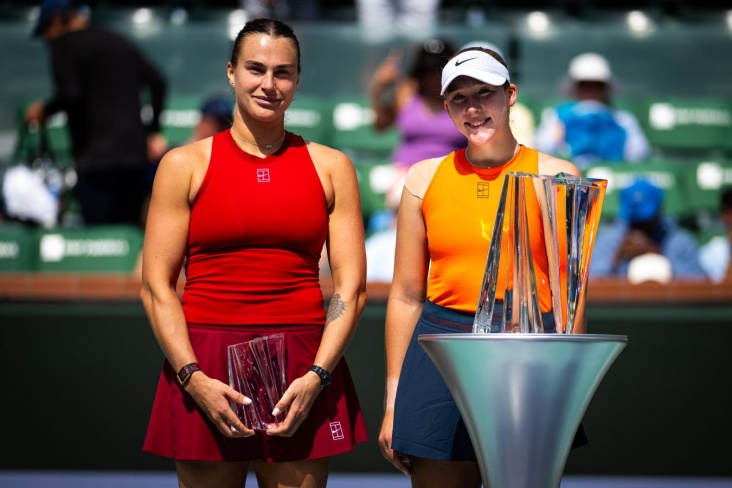MIAMI – This marks Mirra Andreeva’s debut at the Miami Open, but her history with Florida and the United States began six years earlier. This initial visit hinted at the remarkable achievements that were to follow.
“I was very excited,” Andreeva recalled about her first US trip for under-12 tournaments. “I was playing under-12 and I was very small.”
At just 11 years old, she impressively won the doubles title at the Eddie Herr tournament in Bradenton and reached the singles final. A few weeks later, she secured the singles title at the Junior Orange Bowl in Coral Gables, defeating Yelyzaveta Kotliar with a score of 6-1, 6-3.
Kotliar, now 17, is still progressing in her professional career, currently ranked No. 855 in the WTA rankings – a more typical path compared to Andreeva’s meteoric ascent.
After consecutive WTA 1000 victories in Dubai and Indian Wells, Andreeva has achieved a 12-match winning streak and climbed to No. 6 in the world rankings. She is currently the hottest player on the WTA Tour and the youngest player within the Top 125.
At the BNP Paribas Open, she defeated both the World No. 1 and No. 2 players, becoming the youngest player to accomplish this feat at a WTA event in 35 years. She is also in contention for the Sunshine Double, an achievement only attained by two active players.
Andreeva is set to begin her Miami Open campaign with a second-round match against Veronika Kudermetova on Friday. In a media interaction on Tuesday, Andreeva commented on her Indian Wells victory, stating, “I am super happy about the win. Now, unfortunately, I have to focus on Miami.”
This quick shift in focus is demanding, but Andreeva appears ready. Following extensive post-match media engagements after Indian Wells, she and her team had dinner to debrief. With minimal sleep, they faced a 3 a.m. wake-up call for a cross-country flight three hours later.
It took another 12 hours for them to settle in, leaving just enough time for a supermarket run. Andreeva and her mother prepared dinner and went to bed early. After a morning practice session, Andreeva was again in front of the press.
Perhaps Aryna Sabalenka, the world No. 1, has observed Andreeva’s evolution more closely than anyone. Their head-to-head record provides valuable insight:
As a 15 and 16-year-old, Andreeva made deep runs in Madrid, encountering Sabalenka both times, who defeated her in straight sets. However, shortly after her 17th birthday, Andreeva achieved a stunning victory over Sabalenka in the Roland Garros quarterfinals last year, after dropping the first set.
Her coach, Conchita Martinez, describes Andreeva as highly receptive and a quick learner. This pattern of growth was evident this year as well. She lost to Sabalenka in the Brisbane semifinal and the Australian Open Round of 16, winning only three games in Melbourne.
However, less than two months later, Andreeva rebounded to defeat Sabalenka at Indian Wells, again after losing the first set. Despite Sabalenka’s graciousness in defeat, the loss was undoubtedly impactful.
“She definitely can be a great player,” Sabalenka acknowledged in Miami. “She’s moving well, she’s serving well, hitting some great shots. She has a touch and she’s really matured. I think with the years — I don’t know, actually — she’s really so fast with the results and the improvements in her game and she’s so young.
“So I cannot predict when she’s going to be Grand Slam winner or World No. 1, but she’s definitely going to be one.”

